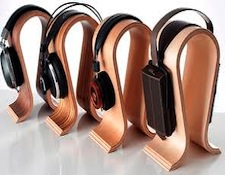It’s the time of year for saving money!

During the Rocky Mountain Audio Fest I overheard a
conversation, the likes of which I have never heard before at a show. A
prospective customer told a sales person, “I have to listen to the preamp
through headphones before I can make a final decision.” And, the customer was
over 40. For most, older audiophiles, headphones are an instrument of domestic
tranquility rather than a best and highest fidelity transducer, but for under
40’s, and especially 20 to 30 year olds, headphones are their ONLY high-end
transducer.
The Demographic of headphone listeners is definitely younger than
traditional audio buyers. But younger doesn’t mean less informed on the fine
points of listening, including soundstaging. What? Soundstaging included in the
same sentence as headphones? You bet.
Headphones, as any experienced headphone user will tell you,
produce a soundstage. And depending on the quality and type of headphone, the
size of a headphone soundstage can vary from a small spot, seemingly in the
middle of your skull, to an arc that is clearly and obviously located outside
your head.
Some older audiophiles never listen to headphones because they
don’t like the “inside my head” experience. But that was then, and this is now
– headphones deserve another listen. Because with the right headphone the
soundstage can not only be outside, rather than inside your head, but it can
also have precise locations for each instrument, just like a good speaker.
Just as audiophiles who listen through loudspeakers had to
learn how to listen for soundstaging and imaging, headphone listeners learn how
to listen to headphones in order to hear soundstaging. It’s not hard, but it does require some time,
attention, and several pair of earphones (so you can do some A/B comparisons), but
with a little time even a headphone-phobic audiophile can discover the wonders
of headphone imaging.





